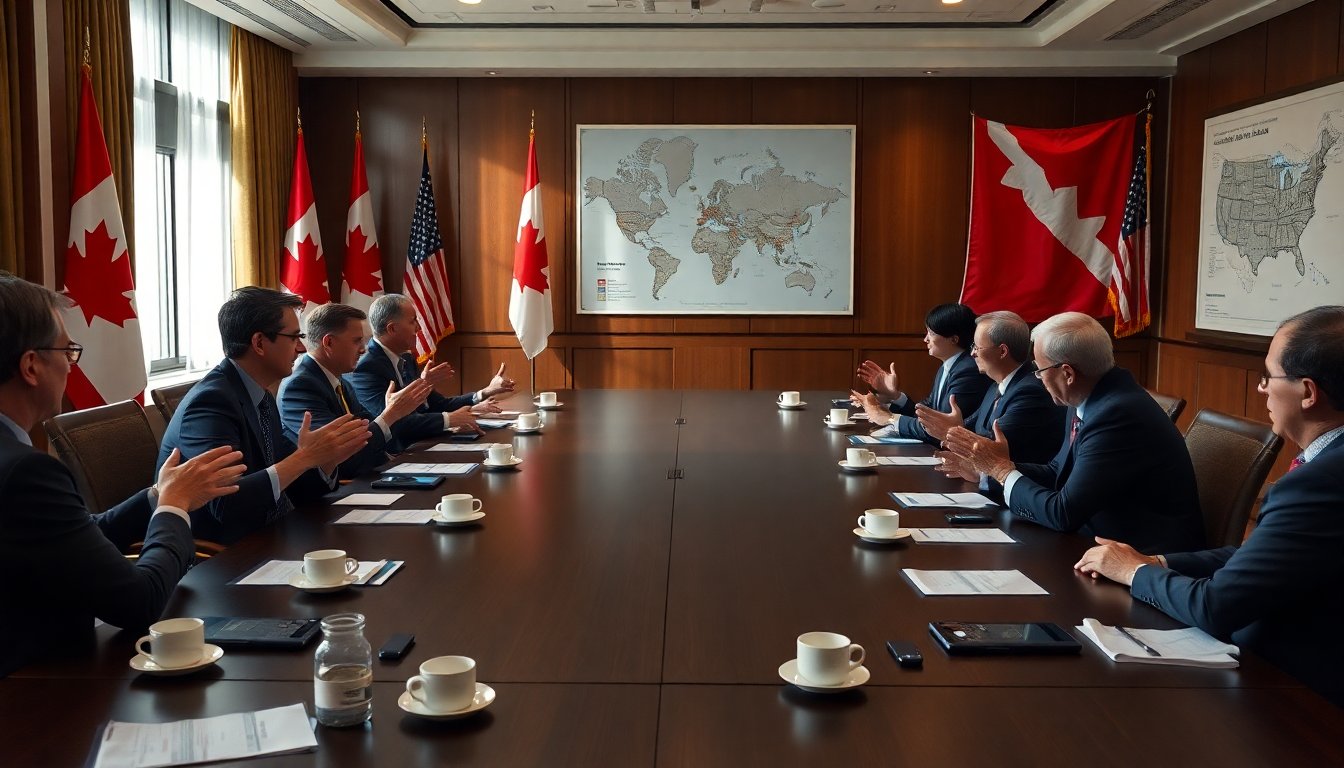Table of Contents
As trade tensions escalate between Canada and the United States, Prime Minister Mark Carney has emphasized the federal government’s crucial role in managing negotiations with its southern neighbor. This statement follows U.S. President Donald Trump‘s threats to impose a 10% tariff increase in response to an advertising campaign launched by the Ontario government that aired on American television.
Carney made these remarks during the Association of Southeast Asian Nations (ASEAN) leaders summit in Malaysia, underscoring that it is the responsibility of the Canadian government to engage in dialogue with the U.S. He stated, “It is the sole responsibility of the government of Canada to have those discussions with the United States, and it’s the best way forward.”
The impact of Ontario’s advertising campaign
The controversy began after the Ontario government aired an advertisement featuring clips of former President Ronald Reagan. The ad aimed to highlight the negative effects of trade barriers, echoing Reagan’s sentiments from a 1987 speech about free and fair trade.
In this address, Reagan warned that while tariffs may seem beneficial for American jobs short-term, they ultimately harm consumers and workers.
Trump, however, reacted strongly against the advertisement, claiming it misrepresented Reagan’s legacy and criticized Canada for airing it.
He expressed his discontent on his social media platform, Truth Social, stating, “Their Advertisement was to be taken down, IMMEDIATELY, but they let it run last night during the World Series, knowing that it was a FRAUD.” Following this incident, Trump announced the cessation of all trade negotiations with Canada, marking a significant setback in relations.
Key responses from Canadian officials
In response to the ad and Trump’s aggressive stance, the Prime Minister’s Office confirmed that communications between Carney and Trump have ceased since the latter’s announcement. While Carney did not elaborate on the implications of the tariffs during the summit, he reaffirmed Canada’s commitment to fostering trade relations with other nations, emphasizing the importance of adhering to trade agreements and the rule of law.
Carney explained, “We respect trade agreements and the rule of law. We value the exchange of goods, capital, and ideas.” Despite the heightened tensions, he expressed the government’s readiness to continue negotiations with American officials, showing optimism about rekindling discussions.
Looking ahead: Trade relations and global partnerships
Both Carney and Trump are expected to meet again during the upcoming Asia Pacific Economic Cooperation (APEC) forum in South Korea, where the Prime Minister is likely to seek further dialogue. Carney has previously indicated the necessity of having reliable trade partners, alluding to challenges posed by a shifting global landscape and the growing rivalry among major powers.
During his address to ASEAN leaders, Carney outlined ambitious goals for the Canadian economy, including plans to double exports outside the U.S. within the next decade and to quadruple defense spending over the next four years. He also announced a significant trade agreement with Indonesia, the first of its kind with an ASEAN member, and expressed a commitment to accelerate bilateral negotiations with other nations.
Future prospects and considerations
Despite ongoing uncertainties in U.S.-Canada trade relations, the Prime Minister conveyed a proactive approach to addressing the situation. Ontario Premier Doug Ford announced that the province would pause its controversial ad campaign to facilitate the resumption of trade discussions, indicating a willingness to de-escalate current tensions.
As Canada navigates these turbulent waters, the government remains focused on securing favorable trade terms while emphasizing mutual respect and collaboration with international partners. The landscape is fraught with challenges, yet the commitment to robust trade relations persists as a cornerstone of Canada’s economic strategy.





